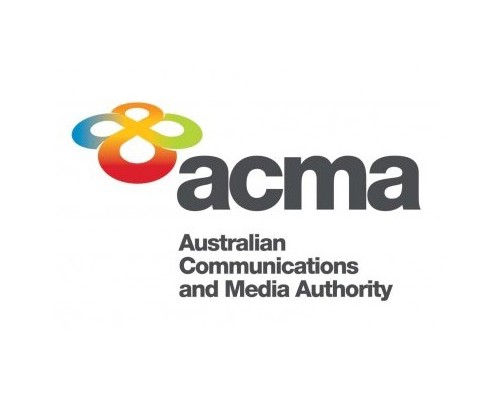SMS marketing messages make up more than 40% of the total volume of text messages sent. Learn about SPAM compliance and strategies used for optimum results on SMS marketing campaigns.
5.1 The ACMA

The Australian Communications and Media Authority (ACMA) is the organisation that sets laws, regulations, and handles breaches in the Australian communications industry. The ACMA produced the SPAM ACT 2003 which is the binding covenant for commercial messaging in Australia.
5.2 SMS SPAM
SPAM regulations are not created to penalise marketers. By following a few simple rules, you’ll create better, more effective campaigns that will get far better response rates, all while not damaging to your brand.
Permission
The recipient must clearly be aware that he or she may receive commercial messages in the future.
Identify
By law, you must always identify yourself by company name either as the Sender ID or within the message itself.
Mandatory Unsubscribe
As a responsible sender, you must provide an opt-out mechanism. It should be displayed within the message and may include the following variations:
- Reply STOP to the message
- Text STOP to a dedicated virtual number
- Call a number in the message
The simplest method is reply STOP. This gives the user the most direct path to opting out.
SPAM Exemptions
Certain organisations are exempt from SPAM law in Australia. These include:
- Government bodies
- Registered charities
- Registered political parties
- Educational institutions (for messages sent to current and former students).
- Purely factual messages
5.3 Security & Privacy
2 Factor Authentication (2FA)
2FA is the term given to the process of receiving authentication for an online service, through the receipt of an SMS code to a mobile handset. This is commonly used for banking transaction authentication or new account registrations.
Mobile phone numbers are generally regarded as a reliable identification method since most people only have one which they keep protected within arms reach at all times. Since mobile devices are in such close proximity to the user, this makes authentication checks quick and easy.
Recipient Privacy
In Australia, privacy is very important and is distinctly different from SPAM. Generally, privacy simply dictates that you cannot gather information about a person without their consent. For example, you may have four or five clients with the same mobile number, and each client may have some unique information about that person (eg. Firstname Lastname, Age, Sex, Location and Interest). The privacy laws state that you cannot aggregate data sourced from different contact points to build a profile of a single subscriber.
You are able to create insights through the anonymous aggregation of the data, but you cannot directly use information gathered in this way.
If you have clients that are concerned about privacy, you should also check the policies of any suppliers that hold their data. According to Australian privacy law, it’s your responsibility to ensure the privacy of your individuals, including use by your suppliers or clients.
5.4 Terminology
Scraping
Scraping is the term known as collecting numbers from published directories or public classified listings. This is a common practice and while seems legitimate is actually a big no-no and is a direct breach of spam law. Sometimes, people will claim inferred consent however this is not recommended and can easily land the marketer in trouble.
Inferred Consent
According to the ACMA inferred consent is described as a conspicuous publication of a work-related number. Consent may also be implied by the publishing numbers on websites, in magazines, or other publications. The recipient must be identified as relevant to your message. For example, if you want to send information about a technology product, the recipient must be identified as the IT manager. If there is a statement that unsolicited commercial messages are not wanted, you cannot infer consent.
Purely Factual Messages
Sending purely factual information is acceptable if messages contain the required identifying information. However, this does not mean you have the recipients’ consent to send future commercial messages or add them to a mailing list.
Examples of purely factual messages include:
- Meeting minutes circulated among committee members
- A product recall notice issued for safety reasons
- An electronic neighbourhood watch newsletter that is sponsored by a local business
- Advice on entitlements for citizens or community groups that does not refer to a service in the course of trade or commerce
- A message sent to a business requesting a quote, price list or product description.
Transactional Messaging
Transactional text messaging generally refers to a single-use message sent to a mobile subscriber containing something that needs their attention. This includes message types such as:
- Appointment Reminders
- Authentication Codes
- Password Reminders
- Registration Confirmations
- Requested Information
- Alerts
These types of messages are not bound by SPAM law, and usually have consent built-in as it is the subscriber requested it.








